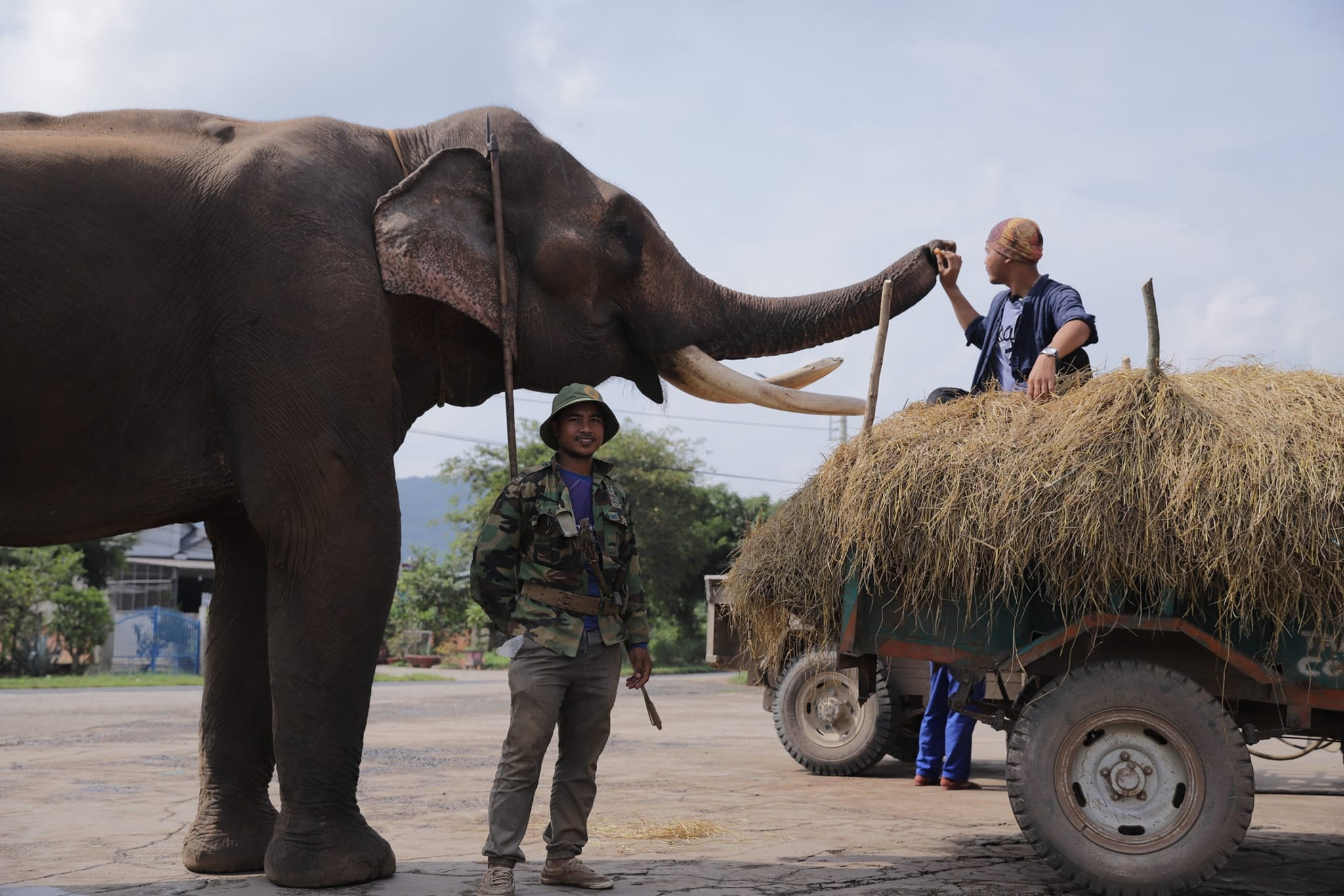
“My father is a well-known mahout in the region. In the past, he brought the elephant of my family – Kham Sen, who is now 34 years old – to serve tourists every day, helping my father get money to feed me and my family. But now, I don’t want to earn money from riding services anymore,” Y Sol said.
In the last three years, Y Sol Sruk, 26, who was born and grew up in Cuor Tak village in Yang Tao commune, Lak district in Dak Lak province, received 1,000 travelers who want friendly experiences with elephants. He guides travelers to walk with and ‘talk’ to elephants, feed them, take pictures with them and listen to stories about the lives of elephants and well-known mahouts in the region.
“I receive two or three groups of travelers each week, who come on therapy trips with elephants. Some people have tears welling up when hearing about the devotion of elephants to families,” Y Sol said.
Y Sol’s father is an experienced mahout. Since his childhood, he has bonded with the elephants at his home and his village. When he turned 18 years old and graduated from high school, he traveled everywhere to seek jobs to support his family.
After four years of working in many places, Y Sol missed his hometown. He dreamt of the majestic homeland with the cultural characteristics of the Central Highlands. The M’Nong ethnic minority man decided to resign from his job, and return to his hometown and start a business.
With his savings, Y Sol used the land of his family, turning it into a space to receive travelers to come to rest and taste food. He learned how to play the gong from villagers and to process local traditional dishes.
The 22-year-old man also learned how to take pictures and posted information about his homeland on social media to attract travelers.
Y Sol started his business in a difficult situation, when Covid-19 broke out. But the young man never thought of giving up. Later, his tours of villages, mountains and waterfalls drew the attention of many domestic and foreign travelers.
He receives travelers on tractors, a ‘means of transport’ which is unfamiliar to urban travelers. He goes trekking with travelers to Bim Bip waterfall and has lunch rat the foot of the waterfall. In the afternoon, travelers get on the tractors to go to the forest and walk with elephants for about two kilometers.
With the support of Y Sol and an experienced mahout, travelers can feed the elephants, take pictures, and watch the peaceful lives of the animal and listen to stories about the life of each elephant.
Lak Lake is the largest freshwater lake in Dak Lak, and is famous for its pristine and wild forest along the lakeside. About 10 elephants gather there for tourists to watch and take pictures.
According to Y Sol, about eight years ago, Kham Sen became aggressive and attacked his father. He had to return Kham Sen to the forest and bring food to the forest to Kham Sen every day.
In the last two years, when local authorities and non-government organizations persuaded local people to stop providing elephant riding services to tourists, many families in Cuor Tak hamlet took the elephants back to the forest.
“Elephants helped the villagers reap a good income from tourists. As the elephant riding service has stopped, many families have lost an important source of income,” Y Sol said, adding that this is what prompted him to develop elephant-friendly tourism which both protects elephants and helps locals with stable incomes.
Instead of letting travelers ride elephants, Y Son helps travelers walk together with elephants on "‘therapy trips".
Many families in the hamlet have followed the move.
Elephants gather in the Lak Lake area, while locals perform gongs, play musical instruments and sing. Visitors watch the sunset, play with elephants and enjoy the traditional music. Daily fatigue and worries seem to disappear.
“The elephants are accompanied by mahouts to ensure safety for the travelers,” Y Sol said.
After leaving Lak Lake, Y Sol brings travelers to his family’s house on stilts, just several kilometers away, where by a fire, travelers can view the daily life of locals.
More than 1,000 tourists have experienced the friendly tours initiated by Y Sol, with 20-25 visitors per tour.
Linh Trang